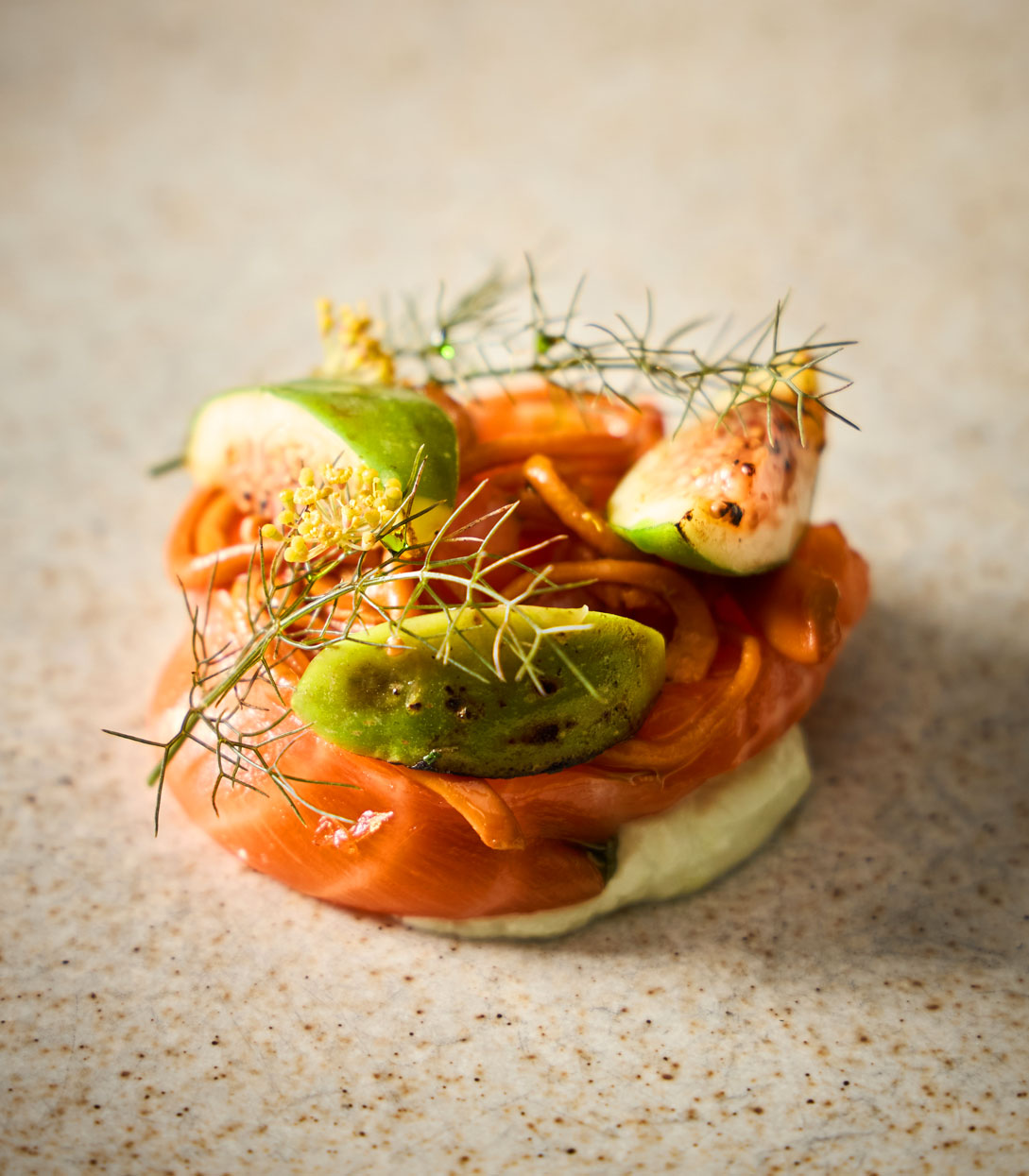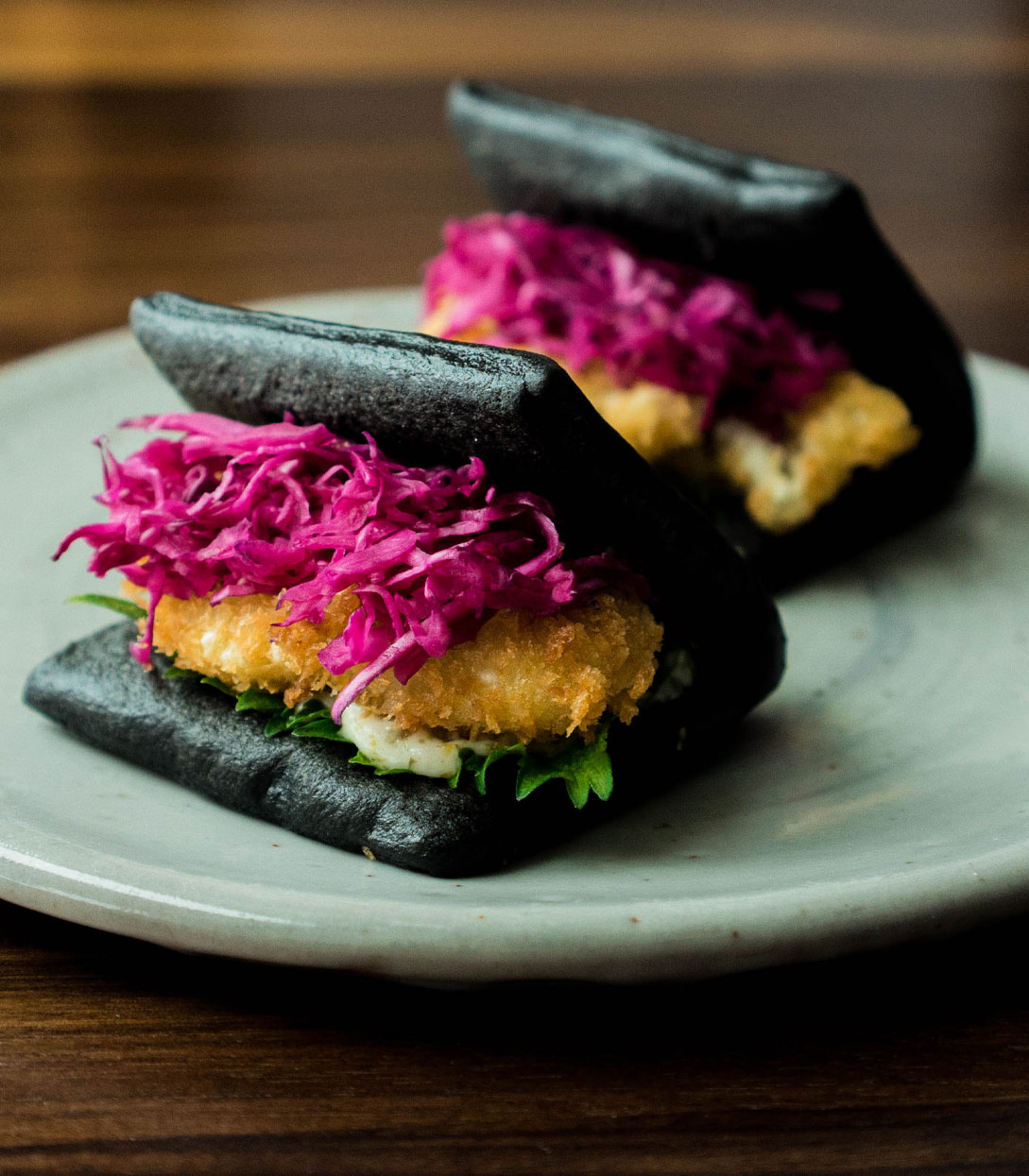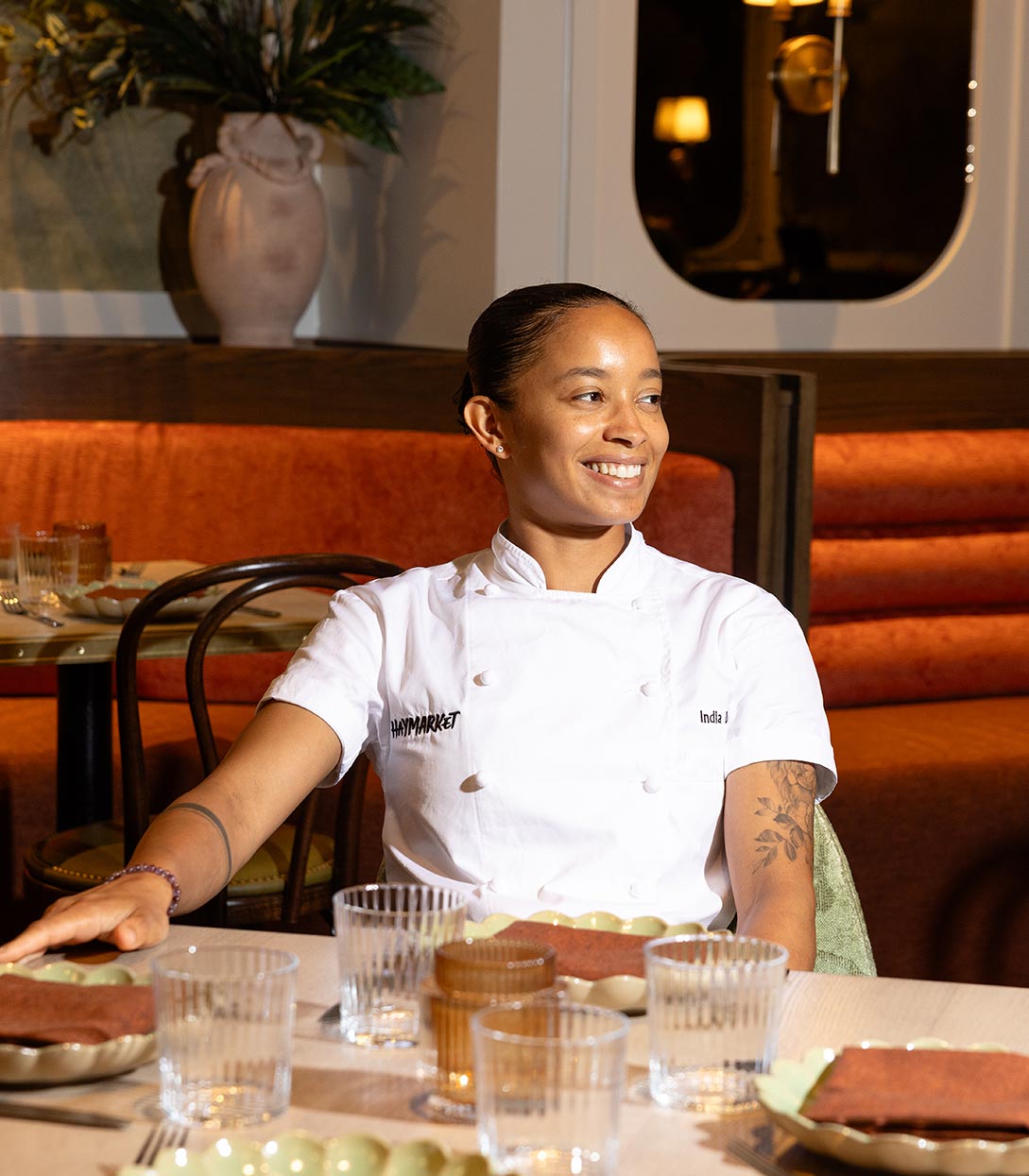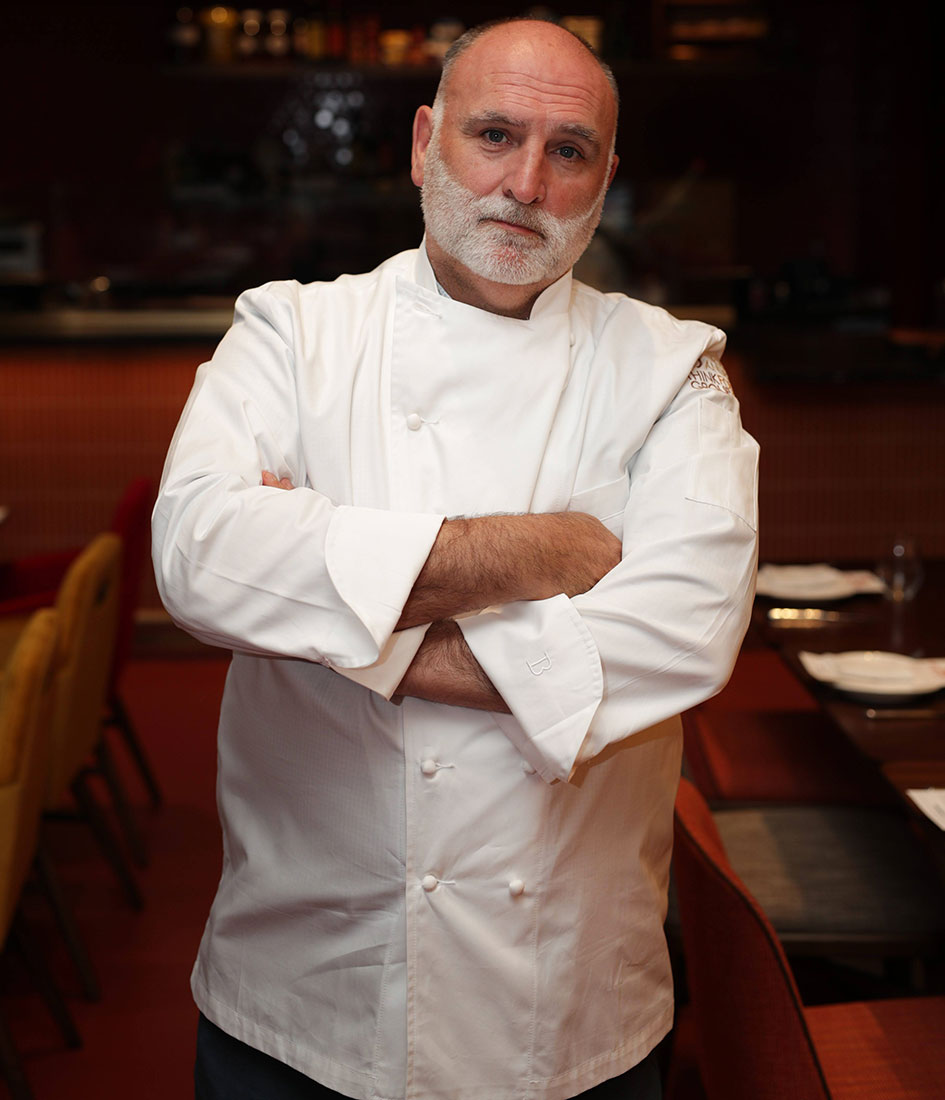When it comes to well-known Israeli chefs, Eyal Shani is a global name.
Originally from Jerusalem and now living in Tel Aviv, he’s earned celebrity status for his hospitality brand The Good People Group, comprised of more than 40 restaurants worldwide under several concepts. Destinations with Shani’s footprint include 13 Israel and others in the US, Australia, Toronto and Paris.
Shani rose to fame in Tel Aviv when he opened HaSalon, an upscale spot that serves up Israeli cuisine along with a lively party atmosphere where dancing on tables happens more often than not.
Shani made his splashy entry into New York with HaSalon in April 2019. Today, his high-end establishments in town encompass his first Kosher restaurant Malka, emphasizing seafood, and the intimate market-to-table modern Israeli spot Shmoné which earned a spot, and One MICHELIN Star, in our Guide last year. (Shani has other concepts in town including the fast-casual Miznon and the music venue Port Sa’id.)

These days, Shani is breeding a trio of chefs who run their kitchens to be the next generation of Israeli star chefs.
They include Loel Miller at Malka who says that instead of seeing Kosher cooking as a limitation, he views it “as a challenge that leads us to innovate.”
HaSalon has Orianne Shapira, a former professional ballerina, leading the show. “The team and I work together in a choreographed dance. The dishes must be exact with a precision and combination of flavors that feels purposeful,” she says. “However, the feel of the experience should be completely organic. Just as in dance where you are constantly making micro-adjustments to your body, we are constantly making adjustments throughout the evening, so you don’t realize that the place you entered is not the place you left.”
And at the Michelin-Starred Shmoné, there’s Nadav Greenberg, 48, who got his beginning with Shani in 2019 when he opened North Miznon on the Upper West Side (it’s now closed and has been replaced by Malka). In 2022, Shani gave him the opportunity to start Shmoné, and fast-forward, the gem of a 50-seat spot is a tough reservation to score.
We caught up with Greenberg recently who told us about how his upbringing figures into the dishes, what ingredients he relies on the most and the difference between a meal at Shmoné and one in an Israeli home.
How does Shmoné pay homage to Israel while infusing it with your distinct style?
‘What is Israeli cuisine?’ is a philosophical question. As I see it, Israel is a melting pot of people from all over the world, each one bringing food from where they grew up back to Israel. It can be from Morocco, Romania or even Brazil, and therefore today, Israel has a rich combination of cuisines and traditions infused into what we call the Israeli kitchen.
I am half Moroccan and half Romanian, so I grew up with grandmothers with very different kitchens, both of which I try to combine at Shmoné. On one hand, I serve beets with horseradish, a traditional dish in Eastern Europe. On the other hand, we have the liver and harissa cigar, which is classic Moroccan. Shmoné represents the Israeli melting pot and the melting pot that I am.
Can you share examples of dishes that are authentic yet speak to you?
The Sasso chicken liver and harissa cigar is reminiscent of childhood holidays at my grandmother’s where she used to make each cigar by hand.
When I opened Shmoné, I knew I wanted to make it here. I did a lot of research into how I could make the most authentic dough, one that’s as thin and light as paper but that has a nice crunch when fried. I think we got it right—it’s one of the most popular dishes we create.

You change the menu daily. How much does it vary from day to day, and how do you keep the dishes innovative when you’re creating new ones all the time?
We change about 30% of the menu daily. Most of the changes come from experimenting with different parts of the lamb, chicken and ducks we get. Since we get all our meats and poultry whole, we use a different cut of them every day. The idea is not to order just lamb chops from the butcher but rather the whole lamb.
The other changes come from the ocean. We use only wild fish and seafood, so selections depend on what we get in. And the vegetables are generally more seasonal. The uncertainty about exactly what ingredients we have to work with each day forces us to be that much more creative.
What is a typical Israeli home-cooked meal like compared with what Shmoné presents?
The ingredients. At Shmoné, we have the luxury of sourcing the best ingredients you can find in New York, which can be a bit hard to do at home.
For example, our Sasso chicken breast with olive oil mashed potatoes and peas is inspired by a traditional after-school lunch that my mom used to make for me growing up. However, at Shmoné, we get a fresh whole Sasso chicken and dry age it for four days before grilling it on the bone on our Japanese charcoal grill. This process allows it to stay moist while still giving a nice smoky flavor. Also, the potatoes are finished with chicken stock that’s been slow-cooked for 14-plus hours. This gives them the perfect sweetness and richness. When my mom used to make this dish, it would take her about an hour.
How do you stay true to Israel while relying on so many local ingredients?
First of all, our core ingredient is olive oil, imported from Israel. We also use Israeli tahini.
That said, I am loyal to the local ingredients here, and my goal is to make them shine. Being restricted to an entirely different range of produce and other ingredients than what I grew up knowing and eating has made me more open-minded in my approach. For me, this isn’t a problem. It's an advantage, and we can take advantage of flavors we can’t typically source in Israel like scallops and mussels.
Hero image: Max Flatow




















